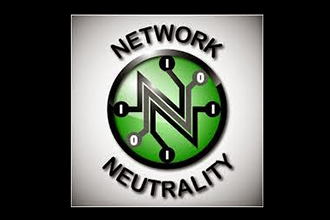In Defense of a Less Neutral Network
 The FCC made waves last week with an announcement that it’s dropping its long-standing position on “net-neutrality” — the idea that all Internet traffic should be treated equally by Internet service providers. This is something with direct impact on an increasingly network-centric AV industry, and one about which several of my fellow AV bloggers have discussed. While I remain in the pro-neutrality camp, I can see a rational argument for moving away from neutrality if it is done in an open and transparent manner. What’s the argument against neutrality? Why do I reject it? Read on.
The FCC made waves last week with an announcement that it’s dropping its long-standing position on “net-neutrality” — the idea that all Internet traffic should be treated equally by Internet service providers. This is something with direct impact on an increasingly network-centric AV industry, and one about which several of my fellow AV bloggers have discussed. While I remain in the pro-neutrality camp, I can see a rational argument for moving away from neutrality if it is done in an open and transparent manner. What’s the argument against neutrality? Why do I reject it? Read on.
It is the consumer side of AV industry that is driving us away from neutrality — mostly streaming video. Not too many years ago, video content and network traffic were two completely separate systems. Consumers would watch television shows via their cable television provider and would rent or purchase movies in the form of physical media. While more users had broadband internet connections, relatively few had their computers connected to the large flat-panel TVs in their house. Changes came both in technology and habit. The technological change is the proliferation of streaming appliances such as Apple TV, Roku, and “smart” TVs with integrated streaming services. The change in habit is an increased tendency to watch content on mobile devices; as these don’t read physical media, streaming has become the only option for what is an increasingly heavily used stream. At present, some estimates claim that Netflix and Youtube combine for over half of internet traffic during peak hours.
How does this form an argument against neutrality? Two ways. First, overall capacity needs to match overall demand. Second, there are qualitative expectations in speed of delivery and tolerance for network lag. (For an illustration of the bandwidth versus lag, see Randall Munroe’s thought-experiment on a super-high bandwidth but slow-response time solution.)
Take three example: Skype, Hulu+ and Weightless Books (I chose Weightless because, in addition to being illustrative, they’re a favorite of mine — always DRM free, which is a topic for another post). We expect something less than high-definition video on a Skype call, but any delay at all is intolerable. If one moves beyond Skype to a video bridging service or cloud-based MCU (e.g., Blue Jeans Network, Pexip, etc.), video resolution (and, therefore, bandwidth) requirements might be even higher. In any event, what a network engineer would refer to as Quality of Service (QoS) is very important in this case, as is bandwidth.
Streaming video is, likewise, a high-bandwidth application. This will only get worse with the coming of 4K video. I know the caveats; there isn’t much 4K content. What content there is will be compressed for delivery over wide area networks. Most people can’t distinguish between 10 and 12 bit color depth, and most hardware configurations aren’t going to give real value for 4K content anyway. That said, 4K is likely coming the same way 1080p has come, the same way 720p before that.
Now let’s move to our online bookseller. I downloaded, just to pick a random example, a copy of Plato’s Republic. It’s 830 kilobytes, well under one second of a high-definition movie. Most people will download one book every week or so, while they might watch a TV show or make a Skype call on a daily basis.
So one could argue that booksellers, newspapers without video content, blogs and other text-intensive types of websites are subsidizing the Netflixes and YouTubes of the world. An end to neutrality would let carriers pass along the cost of a high-speed, low-latency network to those who actually need it, while charging others a lower rate for technically inferior service which is still appropriate for their use. (if an ebook takes a minute instead of ten seconds to download, nobody will feel all that inconvenienced).
In other words, tiered service makes a measure of sense because in a strictly neutral net we all end up paying for the most intense use cases. An end to neutrality might hurt video delivery, but could be a boon for newspapers and booksellers.
Does this mean I’m on the corporate bandwagon against net neutrality? Those of you who have known and followed me here would rightly expect otherwise. There are at least two clear pitfalls. The lesser pitfall is a higher barrier to entry in the streaming video market. If the cost of a “fast-lane” reaches a high enough premium smaller entities looking to join the markets won’t be able to compete with the larger, established players. This could easily create a decrease in choice as niche products without broad appeal have a hard time buying speedier service.
The greater pitfall lies in the creation of vertical monopolies and the inherent competitive advantage they bring. Time Warner and Comcast are both not only distributors of media, but also creators. This, in essence, allows Comcast to “pay” the higher distribution costs for NBCUniversal generated content by taking money out of its left pocket and tucking it into its right pocket. This one factor — that the larger corporate parent keeps the payment for extra speed — invalidates every argument I made in favor of a less neutral net.
I see two solutions of benefit to consumers. First and, perhaps best, would be a return to neutrality. This has the advantage of not only being easiest to accomplish (the monopolies are NOT going to be broken up anytime soon), and of creating the most clear, consistent, and most easily regulated set of rules.
The second solution? A combination of divestment of content creators by content distributors (and vice-versa) and complete transparency in pricing. If creators and distributors were separate there could be a level playing field. That this could be a playing field allowing lower-tier pricing for non-video content could be, to the majority of users — a plus. Is the political will (or, for that matter, the legal structure) there to break the monopolies? I doubt it. So, we’re back where we started, with neutrality being the best — or at least most practical — idea.





